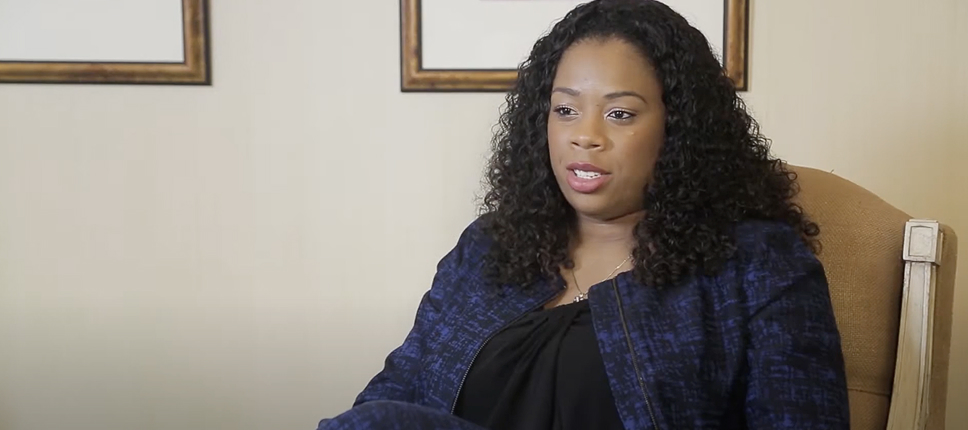Posted in Personal Injury Lawyer
Damages are far and away the most important part of any personal injury case. However, most attorneys focus far more on liability than damages. The reasons for this are myriad, but generally, if a personal injury lawyer trusts “wins” on liability, then she wins the case (as far as most persons in the general public consider). However, if an attorney works on a contingent fee basis, a win with a low dollar value verdict is as bad as a loss – based on our research, 50% of automobile accident cases that went to verdict in Cook County resulted in verdicts of less than $50,000. At least some of these are cases that never should have gone to trial; cases where damages were limited to soft tissue injuries with minimal or no lost work. However, our research also reveals many complaints that recite significant injuries in cases with damage awards under $50,000.
For example, in one case a minor child took a car owner’s vehicle without permission and struck and killed a young child (allegedly while attempting to avoid striking a dog). The case proceeded to trial, and while the Plaintiff was able to establish liability against the car owner, the damages awarded were merely $15,000.
In another case, a defendant driver was determined to have run a stop sign and struck a pedestrian, who suffered a fractured ulna, fractured ribs, and fibromyalgia. However, the jury only returned a verdict of $13,000.
In another example, two drivers caused a massive, multi-car collision that resulted in permanent disc injuries to the plaintiff driver. However, despite these significant injuries, the jury awarded less than $10,000.
In these cases and many others, the issue was not in the valuation of the cases. Any of the above could have resulted in six figure verdicts, and perhaps even seven figure verdicts. Accordingly, it is likely that the low verdict was the result of damages not receiving the attention that it should have received during the litigation proceeding.
In the cases above, based on our review, the primary issue appears to be that entire classes of damages were not claimed. This is most likely due to the Plaintiff’s attorneys handling the case not being aware that certain classes of damages were available. This article provides an overview of the different types of damages that can be recovered in a personal injury case, and some tips on the types of evidence that is required to obtain them.
A significant personal injury case, which is the only type that should ever proceed to trial, will generally cover most (if not all) of the following types of damages:
Damages to Property:
In most personal injury cases, clients will have already settled with their insurance company regarding any damages to their property. However, the level of property damage, and especially pictures of the same, can have a strong effect on the amount of money that a jury decides to award. For example, in an automobile collision case where there is significant damage to a vehicle – either the plaintiff’s vehicle or the defendant’s vehicle – a jury is more likely to be believe that a crash was hard enough to cause significant injuries. Similarly, damages to other property, such as structures, railing, etc., can all be important in convincing a jury that significant harm occurred or did not occur depending on the particular facts of the case.
Where property damages have already been settled, a significant relevance objection can be raised to the admissibility of images of property damage. Usually, a court will find that the images are at least relevant as to the force of the collision, which can be relevant to both liability and damages, but there are decisions going both ways, so review the case law in your jurisdiction and be prepared to argue this issue at the final pretrial conference and at trial when objections come.
In many cases this type of evidence can be obtained through discovery. For example, the investigating officer that responds to a car crash will often take pictures of any significant property damage, and will produce these pictures in response to a subpoena. However, no attorney should rely on discovery for this type of evidence – check with the client to determine what evidence he or she has, and if it does not exist, proactively gather the same. And, while pictures taken by a trial attorney can probably be admitted, spending a small amount of money on a photographer / videographer to take pictures or video and provide a declaration as to their authenticity will avoid any potential objections at trial.
In the somewhat unusual case that property damage is not resolved by the time that a personal injury case goes to trial, a variety of evidence can be introduced. For example, if a vehicle was repaired, testimony from the shop manager as well as the repair bills will be sufficient. However, if a vehicle is totaled, an estimate of the value will be required, which generally will require expert (or quasi-expert) testimony, often from an accountant.
Lost Wages
Lost wages refers to work that the plaintiff missed, resulting in wages that he did not receive. With significant injuries, lost wages can be a large part of total damages. For example, in the case of a truck driver who averaged approximately $46,000 a year for the three years prior to suffering a permanently disabling injury, lost wages prior to trial had already totaled more than $100,000. On the other hand, where lost wages are small (or nonexistent), they should not be claimed, as they will do nothing but distract the jury from more significant parts of the case. The latter can occur where a plaintiff suffers a significant injury but is back at work in a week (perhaps on crutches or in a wheelchair). Nonetheless, such a narrative can be important as it will endear your client to a jury.
For example, in a automobile crash case, one of our clients suffered significant injuries to his knee and back, and had significant medical bills to back this injury up. However, he did not miss a single day at work. Prior to the pretrial settlement conference, the highest offer that the insurance company made was $3,000. At the pretrial conference, Defense counsel attempted to justify this low offer by explaining that our client could not be hurt that bad because he never missed a day of work. However, the Judge responded (correctly) that a jury would see our client as more likable, especially given the testimony of multiple physicians that he experienced significant pain.
Nonetheless, in certain rare cases, a plaintiff’s attorney might want to keep the lack of lost wages out of evidence. If so, you need to make such a determination well ahead of trial, and file an appropriate motion-in-limine if necessary. You should also be aware that such a motion, while potentially successful, is likely to be denied.
Medical Bills
Medical bills refer to the expenses that a plaintiff has already incurred with regards to the injuries that she suffered. In most cases where a plaintiff has experienced a significant injury, medical bills will be substantial, and can serve as an “anchor” for other damages that the plaintiff is claiming. For example, in a case where a plaintiff has had procedures requiring payment of $75,000 in medical bills, such a sum can serve as evidence as to the seriousness of the plaintiff’s injuries.
However, in certain cases, a plaintiff can experience a significant injury but only have minor medical bills. While this does not intuitively make sense, there are injuries that a person can suffer that medicine cannot adequately address. In such a case, a person could only accumulate minimal medical bills that are not at all indicative of the harm that she suffered. While our experience indicates that such cases are rare, when they arise, medical bills should not claimed in the complaint or in any submissions during discovery, and a motion-in-limine to exclude their introduction should be filed. If no medical bills are claimed, then evidence of the same will generally be held irrelevant, although you should be prepared to argue why the medical bills are so low if the motion-in-limine is denied.
Lost Income
Lost income refers to the wages that a plaintiff would have collected in the future but for the injury that she suffered. Lost income is most important in a case where a plaintiff has suffered a debilitating injury and will not be able to work again, or will not be able to work at the same level in her chosen profession again. In such a case, expert testimony, generally from an economist, will be required to establish the amount of lost income. Pay stubs, tax returns, and other similar documents are vital to establish the plaintiff’s past income, which will generally serve as the basis of the expert’s opinion. The expert will, of course, incorporate income growth throughout what would have been the plaintiff’s career except for the injuries that she suffered.
Medical Needs & Other Economic Injuries
Medical needs refers to the medical services, drugs, and equipment that the plaintiff will require throughout his lifetime due to the injuries that he suffered. Other economic injuries, which are often lumped in with medical needs, will refer to other, not-strictly medical needs that a plaintiff will require to properly recover from his injuries and lead as normal a life as possible. For example, a plaintiff with a significant back injury may require consistent exercise throughout his lifetime, which requires a health club membership. Typically, establishing medical needs & other economic injuries will require the testimony of a life planner or rehabilitation specialist. Generally, the life planner will take stock of the plaintiff’s injuries, and their likely progression throughout the plaintiff’s life. Based on this analysis, the life planner will determine what medical services, drugs, and equipment the plaintiff is likely to require. In a case with significant injuries, this often comprises the greatest portion of a plaintiff’s economic injuries. As an attorney, you must take care to ensure that the life planner does not incorporate services, equipment, etc. that would have been required if the injury had not taken place, such as those are typical with aging.
Pain & Suffering
Pain and suffering are damages that compensate a plaintiff for the pain that she has experienced since incurring the injury and will experience going forward. The most common type of argument on this point is a per day or per hour argument; i.e., a per diemargument. However, such arguments are improper in many jurisdictions, including Illinois, which prohibits any type of “mathematical formula” from being used when arguing pain and suffering. Accordingly, other techniques must be used to argue pain and suffering.
One strategy that our firm has employed is to discuss different categories of cases with the jury or at a settlement conference. For example, below is an argument similar to that we have used, and which has been allowed over objection (although it has not been tested on appeal):
If this were a case where our client had suffered a minor injury that healed within a few months without any lasting impact, but which was painful at the time of injury and occasionally during the healing process, we would ask for a small sum to compensate for his pain and suffering, such as a thousand dollars to as much as a few thousand dollars. However, this is not such a case.
Similarly, if this were a case that involved a significant injury that took many months to as long as a year to heal, and our client experienced significant pain from the time of the injury until it had healed, we would have to ask for a larger sum to compensate for his pain and suffering, such as thirty thousand to as many as fifty thousand dollars. But this does not apply to our case either.
On the other hand, if this was a case where our client experienced a major injury, one that was debilitatingly painful when it occurred, and which continued to be painful to this day because it was still healing, and it was uncertain as to whether our client would regain full function, we would have to ask for a suitably significant sum to compensate him for his pain and suffering. In such a case we would be compelled to seek hundreds of thousands of dollars, and perhaps as much as a million dollars to compensate our client for his pain and suffering. However, our client’s injuries are more severe than even this.
In the present case, our client’s injuries are so severe that they dominate every aspect of his life. He has been in constant pain since the date that this injury occurred – there was testimony earlier that nurses heard him screaming in pain the night after he was admitted to the hospital, and that he continued to scream, whimper, or even cry until he was given extremely strong painkillers. That level of pain has continued, largely unabated. His only release comes from taking painkillers that are so strong that they make it unable for him to function in life. Accordingly, he only rarely takes these painkillers. While he has continued to work, you have heard testimony from his coworkers that he broke down crying from pain when a coworker accidentally ran into him – the type of collision that happens to almost every person several times a month. Our client now takes as much as an hour to dress himself daily. He cannot put socks on by himself, and, as you saw, he has to wear slip on shoes. This is a case where pain dominates every aspect of our client’s life, and because of this level of pain, we are compelled to ask this jury to award multiple millions of dollars to compensate for his pain and suffering. Given that our client is expected to live for forty more years, we request that you award him $3,600,000 in damages for the pain and suffering that he has experienced and will continue to experience during his life.
An argument like that above can also be used for smaller cases, simply by stopping at the appropriate level. Generally, no case should go to trial if it fits in the smallest level, so, at a minimum, there is one category of case that the factfinder will be able to use as reference.
Establishing pain and suffering requires extensive evidence of the plaintiff’s condition. The best source of this is from purely unbiased sources, such as nurses that cared for the plaintiff, witnesses to an accident, the investigating police officer, etc.
Emotional Distress
Emotional distress damages, when coupled with a significant personal injury, can also be significant. Generally, to establish these types of damages requires testimony from a mental health professional. It should be noted that many attorneys are concerned about proving up emotional distress damages when their client does not consistently see a mental health professional. However, many times, a mental health professional will testify that occasional treatment by a mental health professional is consistent with mental anguish, as visits with the mental health professional can bring the anguish to the surface, which most persons wants to avoid. Generally, in our experience, the most important factor in establish emotional distress is the underlying cause; when the cause is substantial, and one that a typical person will understand, obtaining damages for emotional distress is easier. In such a case, the focus then turns to the intensity of the mental anguish as well as the duration it is experienced. Both will require testimony from the plaintiff as well as those close to him, and expert testimony.
Loss of Enjoyment of Life
Damages for loss of enjoyment of life compensate an injured plaintiff when her injuries keep her from enjoying activities that she was able to enjoy prior to the injury. For example, a person who was an avid tennis player who suffers a debilitating injury can receive compensation for her not being able to enjoy tennis in the future. Similar, other hobbies and activities that were important to a plaintiff prior to suffering an injury should be catalogued and explained to the jury throughout the case. In particular, such evidence is not only important for the separate compensation that they can bring, but also for the effect that such testimony can have on the jury’s award of other damages.
Loss of Consortium
Loss of consortium refers to the impact of an injury on a plaintiff’s relationship with the plaintiff’s spouse, and specifically, the inability of the plaintiff to maintain a sexual relationship. Some jurisdictions will also consider the impact on a parent and child when one is injured. Such injuries can, in the right circumstances, be significant. Testimony from your client and your client’s loved one will be critical here. In certain cases, expert testimony can be useful as well.
Punitive Damages
Punitive damages are the last type of damages considered for good reason – they are rarely awarded, and Supreme Court precedent has largely gutted their effectiveness. Nonetheless, in the proper case, even under existing precedent, punitive damages can act as a multiplier on other damages of many times. For example, a case where compensatory damages (everything but punitive damages) are determined to be $2 million dollars, punitive damages can easily bring such an award to $10 million dollars or more. Punitive damages are only awarded in the most egregious cases where a defendant’s conduct is determined to be intentional or outrageously careless.
Many types of evidence can be required to establish punitive damages. As a general guideline, evidence that establishes egregious conduct on the part of the defendant is the focus. For example, where a person runs a stop light and strikes your client causing egregious harm, and there is no evidence of intentional conduct on the part of the defendant, punitive damages will almost never be obtained. On the other hand, if the defendant had been out drinking for several hours, and also had imbibed another mind-altering drug, there is a strong argument for punitive damages. Finally, if all of the above is true, and the defendant had been traveling in excess of one hundred miles per hour when he ran the stop light, there is little doubt that punitive damages would be appropriate.































